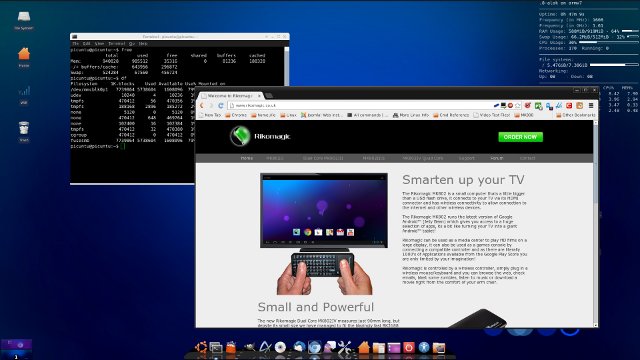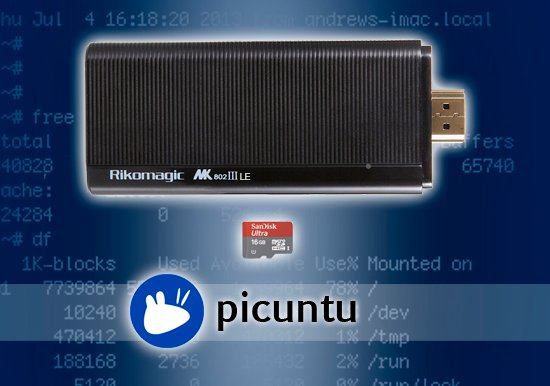If you’ve been following the ARM based mini PC space, you may already know about Rikomagic MK802 III and MK802 IV HDMI TV Sticks, respectively based on Rockchip RK3066 and RK3188, running Android Jelly Bean. Rikomagic and Cloudsto Electronics have just announced they will launch a “Linux Edition” (LE) for those two devices called MK802III LE and MK802IV LE Quad Core, running Picuntu (Ubuntu) Linux.
Since Linux on RK3188 is still work on progress, Cloudsto MK802III LE will be available first, with the following specs:
- SoC – Rockchip RK3066 dual core Cortex A9 @ 1.6Ghz + Mali-400 MP4 GPU
- System Memory – 1GB RAM
- Storage – 16GB Micro SD card preloaded with PicUntu, but no word about NAND flash
- Video Output – HDMI (1080p)
- Connectivity – Wifi 802.11 b/g/n
- USB – 2 x USB ports

It’s not very clear if the hardware will be slightly tweaked (e.g. smaller NAND flash, as I understand it is required for booting), or if it will just be exactly the same hardware as the Android version, but the addition of a 16GB micro SD card preloaded with Picuntu. Pricing and availability have not been provided at this time, but those will probably be updated on Rikomagic UK’s Linux mini PCs page.

Jean-Luc started CNX Software in 2010 as a part-time endeavor, before quitting his job as a software engineering manager, and starting to write daily news, and reviews full time later in 2011.
Support CNX Software! Donate via cryptocurrencies, become a Patron on Patreon, or purchase goods on Amazon or Aliexpress





